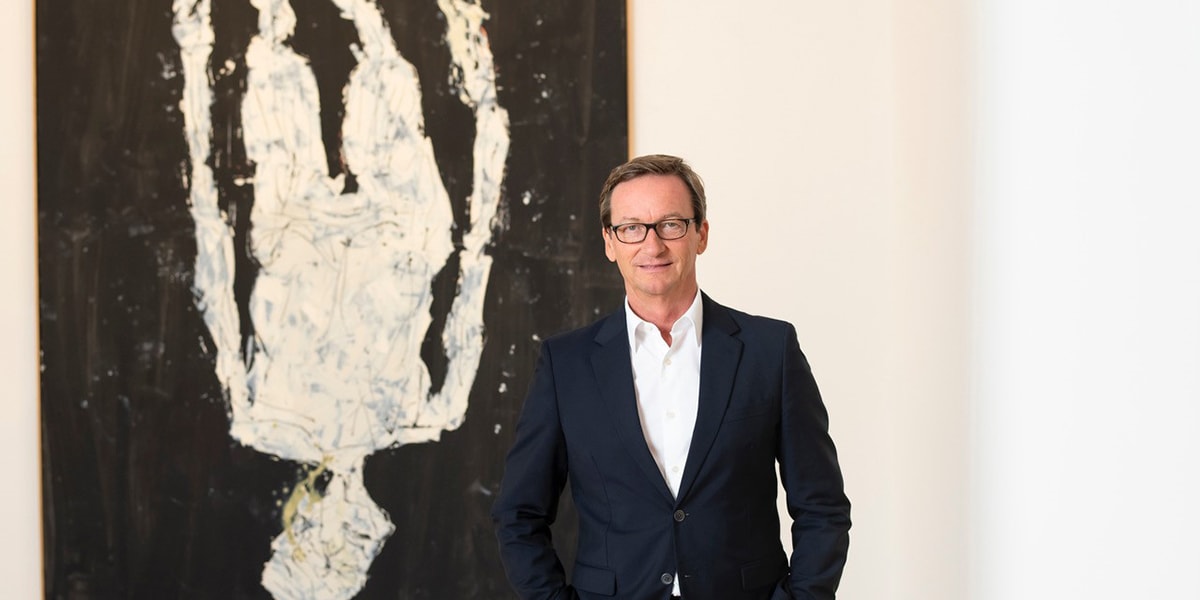It is crucial that our art business programmes remain current and relevant. We achieve this by inviting prominent industry players to comment and share their experience on today’s art world with our students. As part of our recent Art Business Spring School, we had the privilege of welcoming ingenious gallerist Thaddaeus Ropac who shared his advice and wisdom on leading a successful gallery business.
Founded in 1983, Galerie Thaddaeus Ropac has opened galleries in London, Paris and Salzburg, and is currently expanding his team in Asia. Specialising in contemporary art and representing over 60 artists, the gallery supports and showcases the careers of some of the most influential artists today, including Georg Baselitz, Anself Kiefer, Alex Katz and Adrian Ghenie.
You often say: “The artist always comes first”. How do you make your artists happy?
An even better way is to say, ‘The artist is always right’. The artist is the one who creates the work, takes the entire risk of a failure, as well as of a success. A gallery is here to help the artist but cannot take any of the weight. We can provide the infrastructure such as rent of the studios, health insurance, basically anything that is practical and easy to organise. We are also here to protect and shield them because an artist is sometimes an easy target for media or “bad” collectors. This is all based on trust which builds over time. We have to understand the artists and take the pressure off them.
How do you choose the artists you are willing to represent, support and shield as you put it?
The decision is made by a group of experts – the bigger the gallery, the bigger the structure. Art theoretics, art critics, museum curators, they all become part of a team which regularly meet, visit the studio, and share ideas with each other – that is the way our programme is built.
How important is art business education or art education in general in terms of building collectors’ confidence?
I am a big promoter of education. First you have to understand the art and then you can understand the artist. I am sometimes shocked at how little people within the art world know about art history. You can of course live in a bubble of contemporary art, but it is much richer if you educate yourself about the evolution of art over the past five hundred years. The more you learn the more you gain a better understanding of what is happening in today’s art world.
Looking back to the 1980s when you opened your first gallery, how has the art business changed since then?
I have seen the art market develop over the years, from the ivory tower to the centre of life. Thirty years ago, it was just a very small group and very elitist. You had to be part of the art world to understand it and almost beg for some information. Today’s art world offers incredible inclusive access to everyone. Younger generations can’t even imagine their life without contemporary art.
You are not only a gallerist, but also a collector yourself. What would be your advice for a young prospective collector who wants to build their own collection?
I would say create your own taste, do not collect with your ears but your eyes. Learn to look and appreciate the quality of art and then collect on whatever level you can. This will make more for you than if you have the right people and the right names to follow.
We are currently running our courses and events remotely, for exclusive online art talks please follow our social media channels for the latest updates.

